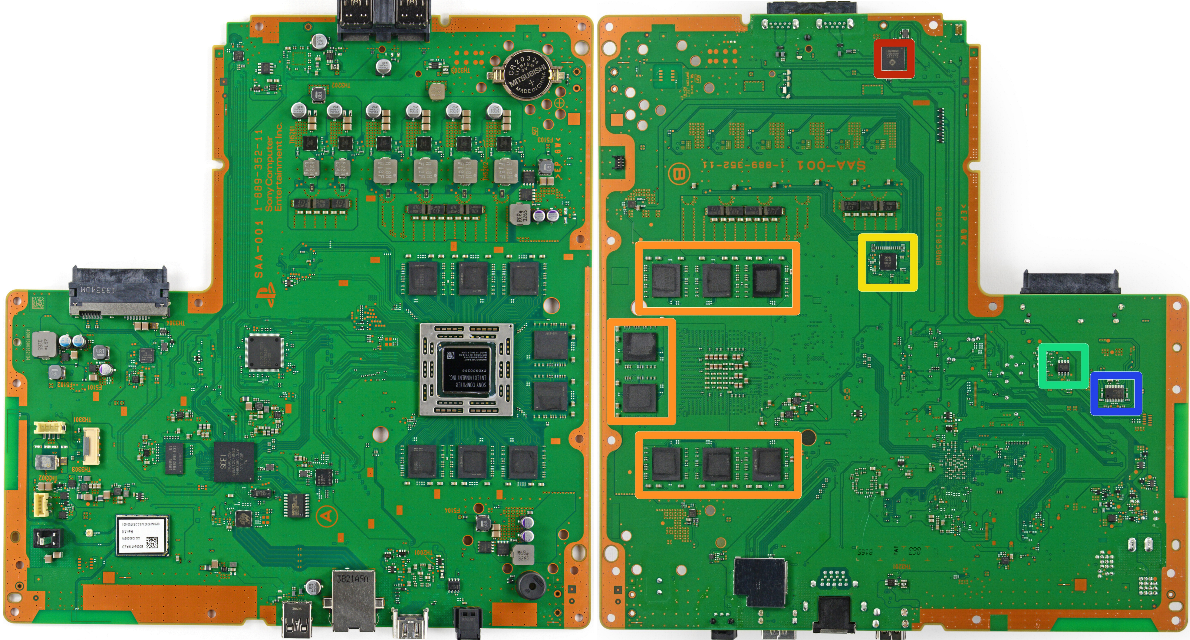Jonathan Anwar
English 21007
Professor Otte
September 20, 2020
The PlayStation 4, a Superior Console
On November 15, 2013 Sony released arguably one of the best consoles yet. With smaller dimensions and lighter weight, the PlayStation 4 caught the world by surprise. Mark Cerny, head architect of the PlayStation 4, stated that it took them six years to make the hardware, four years to engineer it, and two years to make the PlayStation 4 and design it. With many improvements to the PlayStation 3, the PlayStation 4 still leads as one of the best consoles out. With functionalities such as the ability to play thousands of different games all in one place, ability to play online with people around the world or play locally with others on one PlayStation, WiFi, Ethernet and Bluetooth connectivity, battery less controller that charges from the console, wireless connection of the controller to the console through Bluetooth, ability to stream live to many different platforms, record videos, and output media in 4K. These are some of the features that make the PlayStation 4 truly a one of a kind console.
There are many smaller parts within the PlayStation 4 console that have different functions but all ultimately work together to make the console function as one. One of the most crucial parts inside the PlayStation 4 is the motherboard. The motherboard is what controls the console and tells each part what to do. The motherboard is its own mechanism and has many small parts within it that help it work and function properly. The console features a 8 core x86-based CPU and 8GB of GDDR5 RAM which make the console function faster and overall better. For a secondary chip it features a Samsung K4B2G1646E-BCK0 chip which allows the PlayStation 4 to run multiple applications at once. For serial flash memory it has a Macronix MX25L25635FMI which is believed to be used to store the 15 minute video clips that can be captured on the console. It also has a custom built APU called CXD90026G SoC which includes both a Central Processing Unit (CPU) and a Graphics Processing Unit (GPU) which processes everything that is going on in the system (the brains of the console) and the GPU which processes the graphics. For the Ethernet controller the console features the Marvell Alaska 88EC060-NN82 which allows the console to be able to connect to the internet through Ethernet. Also it includes a Genesys Logic GL3520 USB 3.0 Hub Controller which allows the console to connect with other devices and charge the controller through a USB port. It also includes a Panasonic MN86471A HDMI Communication LSI which allows video to show through HDMI outputs. In order to use WiFi and Bluetooth, the motherboard uses Marvell’s Wireless Avastar 88W8797. All of these small components that are in the motherboard allow it to be able to receive and send out information to all the parts of the console and allows it to function properly and at its best ability.
In addition, the PlayStation 4 has other parts within it (other than the motherboard) that help it operate properly and efficiently. This console utilizes the SATA II from HGST which is a Hard Disc Drive or HDD that has 500Gb of storage to download applications and save data. The optical drive in the console consists of four circuits (Renesas SCEI RJ832841FP1, Microchip Technology 312 3536A B, D7763EFV 325 T62, STM8ED 9H A07 VG MYS 331Z), three fuses (F201, F202, F203), and two connectors (4 ribbon, 1x 4pin) which allows the console to read discs three times faster than the PlayStation 3. As a secondary processor it features a SCEI CXD90025G processor which allows the PlayStation to maintain a lower power state. For power management technology, this console uses International Rectifier 35858 N326P IC2X, this allows the PlayStation to have great performance and at the same time reduce power intake and consumption. For cooling fans, it utilizes the KSB0912HE-CK2M which prevents the system from overheating and getting damaged from excessive heat. In addition, the PlayStation 4 has nine thermistors in the front and one in the back in order to measure the temperature of the system and prevent any damage that can be done from extreme temperatures. The power supply that provides the console with energy to run and operate has AC input of 100-240V~ 2.5A 50/60Hz and DC output +12V 17A, +4.7V 18.6A. The IDT 6V41265NLG is a custom clock synthesizer that keeps communication between the secondary chip and the APU.
The PlayStation 4 is truly a complex mechanism that incorporates many different smaller parts within the system that all work hand in hand to make the console operate fast and reliably. The motherboard components (in paragraph two) all work together to allow the motherboard to function and tie every component together. With the motherboard controlling every other aspect of the console, it allows it all to work together, giving the user complete control of how they use the system.
Diagram 1 (motherboard):

Diagram 2 (system breakdown):

Diagram 3 (assembled system):

Sources:
https://gamingbolt.com/inside-the-playstation-4-motherboard-components-explained
https://www.psdevwiki.com/ps4/Motherboard_Components
https://www.techinsights.com/blog/sony-playstation-4-teardown


